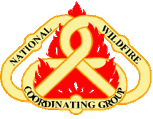The operator of the engine referenced in this safenet is to be complimented for their attention to safety on the morning of May 10th and the actions they took to determine what was making the strange noise. Stopping and checking the vehicle likely prevented the loss of the dual wheels on the driver’s side of the vehicle and prevented a serious incident or accident.
Due to design of the Type 6 F550 rear axle, the dual wheels are secured to the rear hub with one set of lug nut “sandwiching” the two wheels together rather than an inside and outside lug nut design found on some larger vehicles. As a result, the independent motion of the two wheels can result in a loosening of the lug nuts, resulting in either damage to the lug bolts or wheel, or the total loss of one or both wheels.
The Wallowa-Whitman National Forest has experienced similar issues to those identified in this safenet on Type 6 engines over the past 10 years and has in place Standard Operating Procedures (SOPs) designed to reduce the potential for the occurrence of just this sort of event. It is apparent from this event that either there are gaps in the effectiveness of forest SOPs and/or the forest needs to ensure all units are following the SOP’s as designed.
In the mid 2000’s an engine lost both wheels on one side while travelling over the same road referenced in this report, following a tire change at a local tire dealer during which the tires were mounted incorrectly. Following this incident the forest adopted the following Standard Operating Procedure to reduce the potential for a similar incident:
1) All type 3, 4 and 6 engines on forest would be equipped with a torque wrench to allow the operator appropriately tighten lug nuts
2) Wheel torque on above mentioned engines would be physically torqued once a week with a torque wrench during vehicle checks
3) Operators would check and physically torque all wheels following any repair at a commercial vendor prior to putting the vehicle in service.
4) Daily vehicle checks would include a visual inspection of lug nuts
The incident mentioned in this Safenet was brought to the attention of the forest equipment shop as well as the forest FMO group. It was the consensus of the FMO group that attention to meeting the SOP’s may have slipped over the intervening years (unsure if a contributing element in this incident) and that the forest should re-emphasize the importance of following the SOPs as well as look into other elements of this event to see if there was more that should be done.
At this time the forest FMO group and forest equipment shop have “re-emphasized” and expanded existing SOPs with all fire equipment operators, to include crew carries. In addition to following the SOPs, all units will ensure they have torque wrenches. Broken or missing wrenches will be provided by WCF. The forest fleets shop has a standard SOP to torque all wheels when mounted and record that torque in the repair log. As in past incidents, there is a level of uncertainty as to “who” is responsible for allowing loose lug nuts to go un-noticed. While all have a level of responsibility to ensure repair work is done safely, it is ultimately the vehicle operator who needs to make the final determination that the vehicle should put back in service. Vehicle operators will now be required to physically torque lug nuts any time a vehicle wheel has been removed by either a commercial or agency mechanic or tire dealer prior to putting the vehicle back in service.
Additionally, the Whitman Unit is exploring the use of a paint pen that could be used to mark torqued lug nuts and provide a visual indicator or a loosen lug nut between weekly torque intervals. If this paint option works it will be added to the forest SOP’s. |



